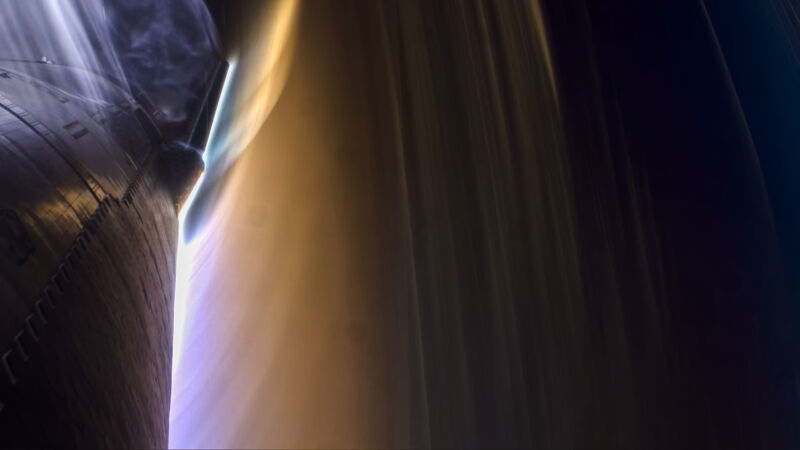SpaceX’s Starship took a beating but held on for first return from space

Enlarge / Not a simulation. Plasma pours over the aerosurfaces of SpaceX's Starship during reentry high over the Indian Ocean.
SpaceX demonstrated Thursday that its towering Super Heavy booster and Starship rocket might one day soon be recovered and reused in the manner Elon Musk has envisioned for the future of space exploration.
For the first time, both elements of the nearly 400-foot-tall (121-meter) rocket not only launched successfully from SpaceX's Starbase facility near Brownsville, Texas, but also came back to Earth for controlled splashdowns at sea. This demonstration is a forerunner to future Starship test flights that will bring the booster, and eventually the upper stage, back to land for reuse again and again.
The two-stage rocket took off from Starbase at 7:50 am CDT (12:50 UTC) and headed east over the Gulf of Mexico with more than 15 million pounds of thrust, roughly twice the power of NASA's Saturn V rocket from the Apollo lunar program of the 1960s and 1970s.